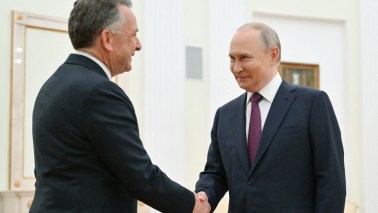Had Onan not spilled his seed upon the ground, he might have invented invisible ink. The possibility had not occurred to me until I read this account of the start of Britain’s intelligence services. Even then the implications seemed so startling as to be barely credible — that the entire trade in espionage, including the serried ranks of Cheltenham’s GCHQ, the massed battalions at Fort Meade’s National Security Agency, the MI5s, 6s and other shadowy digits, not to mention literature’s denizens, from Ashenden and Greenmantle to James Bond and George Smiley, owed its origin to solitary sex. Yet the source given on page 48 of Russian Roulette appears impeccable. Describing the early days of the Secret Intelligence Service under Captain Mansfield Cumming, generally known as C, when a desperate search was being made to discover a secure means of communicating clandestine information, Giles Milton quotes the Q of the era, ‘I shall never forget C’s delight at the announcement that one of his staff had found out that semen would not respond to iodine vapour.’
Since the author also asserts that C controlled up to 1,000 operatives, it is difficult not to let one’s eyes widen a little. Could all of them have chosen to send back their secret messages in the same way? After all, how much invisible ink would a spy have to produce in order to transmit a complex report on, say, the strategy of the Comintern to spread communism around the world? Yet apparently undaunted by the demands made upon them, C’s agents buckled down to the business. ‘Our man in Copenhagen, Major Holme, evidently stocked it in a bottle’, Q recalled, ‘for his letter stank to high heaven and we had to tell him that a fresh operation was necessary for each letter.’
Fascinating though this detail is, Russian Roulette has a larger canvas to fill.







Comments
Join the debate for just £1 a month
Be part of the conversation with other Spectator readers by getting your first three months for £3.
UNLOCK ACCESS Just £1 a monthAlready a subscriber? Log in